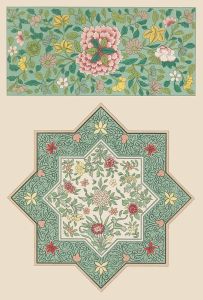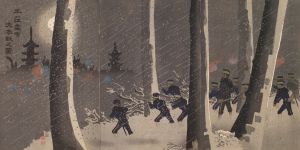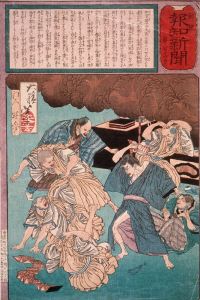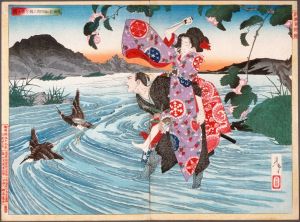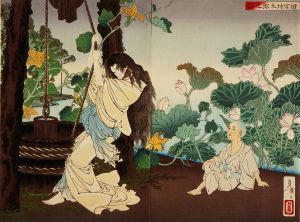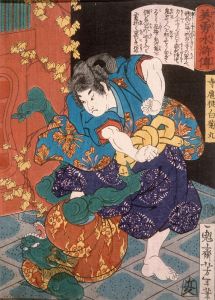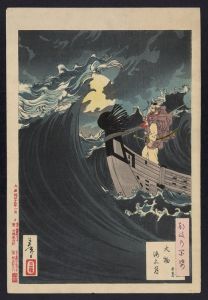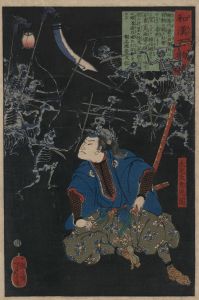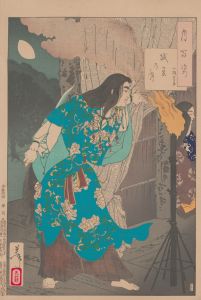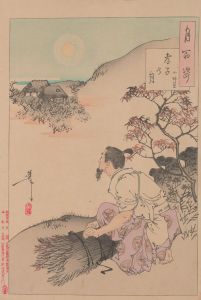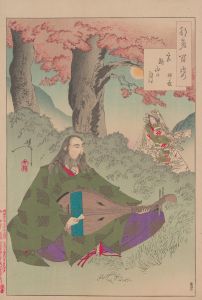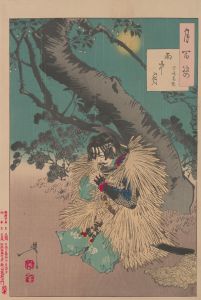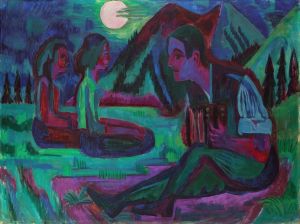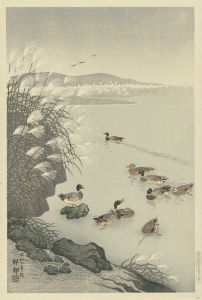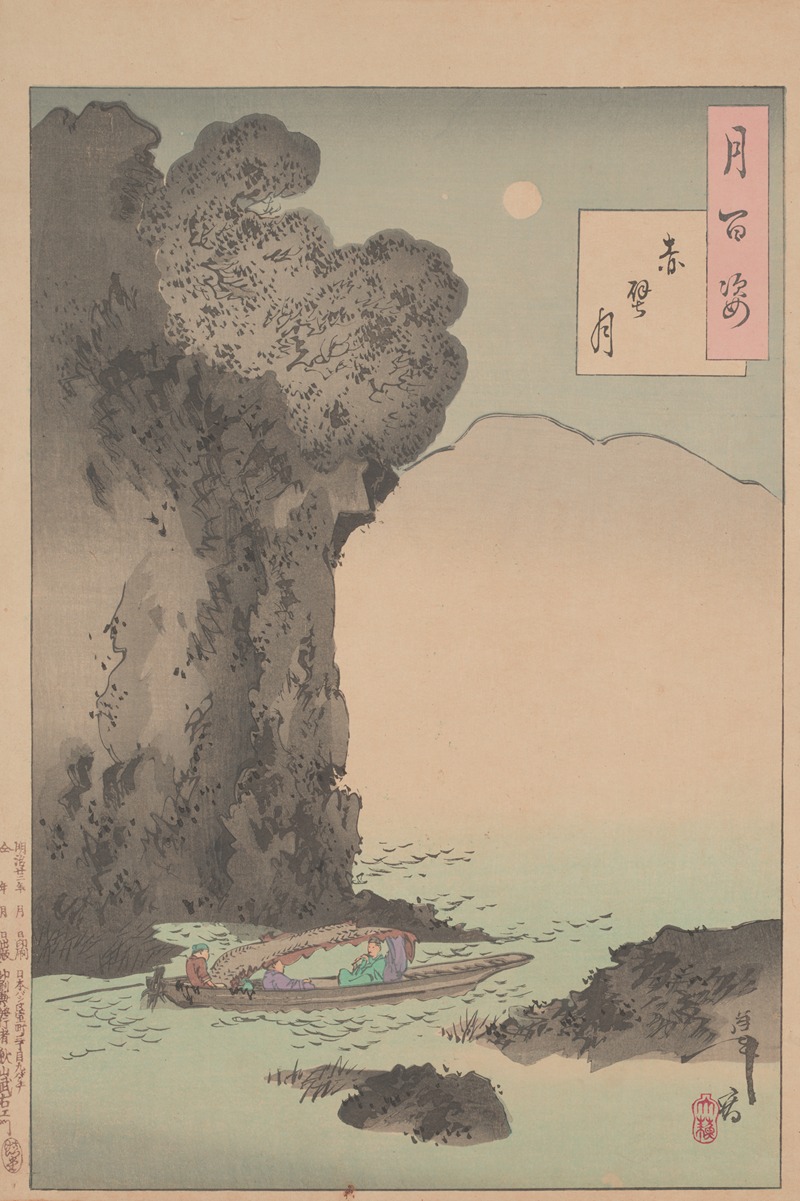
Moon of the Red Cliffs
A hand-painted replica of Tsukioka Yoshitoshi’s masterpiece Moon of the Red Cliffs, meticulously crafted by professional artists to capture the true essence of the original. Each piece is created with museum-quality canvas and rare mineral pigments, carefully painted by experienced artists with delicate brushstrokes and rich, layered colors to perfectly recreate the texture of the original artwork. Unlike machine-printed reproductions, this hand-painted version brings the painting to life, infused with the artist’s emotions and skill in every stroke. Whether for personal collection or home decoration, it instantly elevates the artistic atmosphere of any space.
"Moon of the Red Cliffs" is a woodblock print by the renowned Japanese artist Tsukioka Yoshitoshi, part of his celebrated series "One Hundred Aspects of the Moon" (Tsuki hyakushi). This series, created between 1885 and 1892, is considered one of Yoshitoshi's masterpieces and is highly regarded for its artistic and cultural significance. Yoshitoshi was a pivotal figure in the ukiyo-e genre, which flourished in Japan from the 17th to the 19th centuries, and he is often credited with revitalizing the art form during its decline in the late 19th century.
The "One Hundred Aspects of the Moon" series consists of 100 individual prints, each depicting a scene inspired by Japanese and Chinese history, literature, folklore, and mythology, all unified by the theme of the moon. "Moon of the Red Cliffs" is one of the prints in this series and is inspired by the famous Chinese historical event, the Battle of Red Cliffs, which took place in the winter of 208/209 AD during the late Eastern Han dynasty. This battle was a decisive conflict that led to the end of the Han dynasty and the beginning of the Three Kingdoms period in China.
The Battle of Red Cliffs is famously romanticized in the Chinese literary classic "Romance of the Three Kingdoms," written by Luo Guanzhong in the 14th century. The story is well-known for its dramatic and strategic elements, including the alliance between the warlords Liu Bei and Sun Quan against the powerful warlord Cao Cao. The battle is celebrated for its clever tactics and the use of fire ships to destroy Cao Cao's fleet on the Yangtze River.
Yoshitoshi's print captures the essence of this historical and literary event, focusing on the atmospheric and emotional aspects rather than the detailed depiction of the battle itself. The artwork typically features a serene and contemplative scene, often with figures gazing at the moon, which serves as a symbol of reflection and the passage of time. Yoshitoshi's use of color, composition, and intricate line work in "Moon of the Red Cliffs" exemplifies his mastery of the woodblock print medium and his ability to convey complex narratives and emotions through visual art.
Yoshitoshi's "One Hundred Aspects of the Moon" series, including "Moon of the Red Cliffs," reflects his deep appreciation for traditional Japanese and Chinese culture, as well as his innovative approach to storytelling through art. The series was produced during a time of significant cultural and social change in Japan, as the country was opening up to Western influences during the Meiji period. Despite these changes, Yoshitoshi's work remained deeply rooted in the classical themes and aesthetics of the ukiyo-e tradition, while also incorporating new techniques and perspectives.
Today, "Moon of the Red Cliffs" and the entire "One Hundred Aspects of the Moon" series are celebrated for their artistic beauty and historical significance. They continue to be studied and admired by art historians, collectors, and enthusiasts around the world, serving as a testament to Yoshitoshi's enduring legacy and the timeless appeal of ukiyo-e art.





